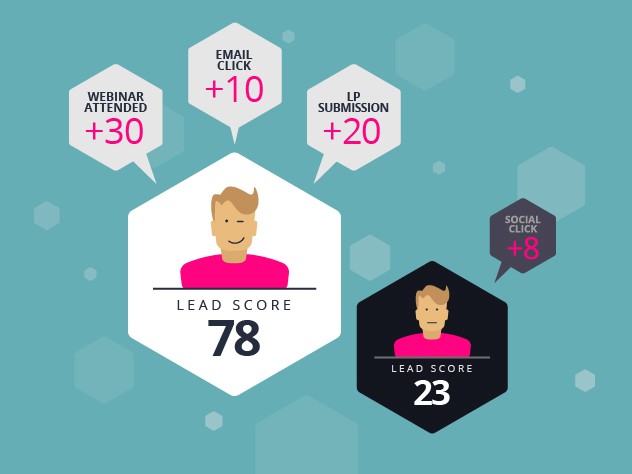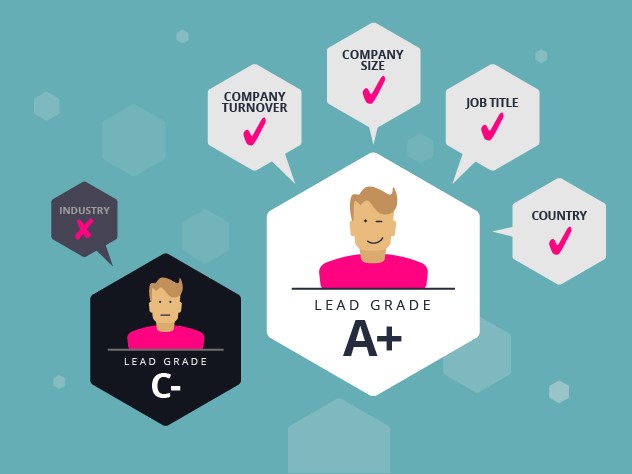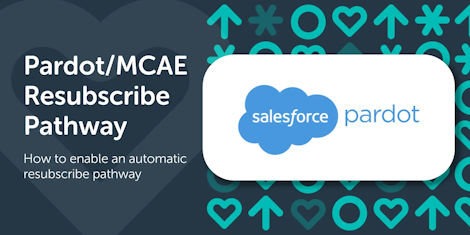With Pardot prospect activities, we can see what prospects are up to, what their engagement levels are, and what kind of potential opportunity they might be. This is great - but requires looking into a specific record and collating different bits of data. Doing this for every prospect isn’t feasible – there just isn’t the time.
Wouldn’t it be great if at a glance, we could view engagement levels for a whole set of prospects?
How about viewing the quality and suitability of a prospect? Again, at a glance for a whole list - allowing you to quickly focus on the prospects likely to be your most valuable opportunities.
Pardot lead scoring and grading can do exactly this, and don’t worry, both are included with all Pardot packages, so you already have this functionality - it just may not be set up yet.
Pardot Lead Scoring
Scoring essentially analyses all the activities Pardot has recorded against a prospect, and provides their own personal score. The higher the score, the more engaged the prospect.

This offers loads of benefits. Not only can you determine a prospect’s engagement level without needing to dive down into their record and scroll through pages of activities – though you can of course still do this for more detail – but it’s a really convenient way of comparing the engagement levels of different prospects.
It’s also really easy to use the score as criteria for building lists and taking actions. How about notifying a particular user via email when a certain score is reached? Or firing that prospect over to salesforce for follow up as soon as they meet the threshold? It’s essential to follow up your most engaged prospects in real time – you don’t want them getting impatient and going elsewhere.
You can also break down a score into different categories, providing visibility of which assets the score has come from. If a prospect has a high score - most of which has come from engaging with marketing materials about a particular product - this could be reflected in the way that prospect is marketed to in future, or in deciding which sales person handles the opportunity.
All the scoring information is visible in both Pardot and Salesforce, so both your marketing and sales teams alike can reap all the benefits.
Pardot Lead Grading
Leads come in all shapes and sizes, and whilst their score will give you insight on how engaged they are, grading allows you to allocate each prospect a grade depending on how suitable they are to your business.

You can define exactly what metrics you look for in your perfect prospect – and those you want to avoid – as well as what sort of weighting each one should carry. It may be that a prospect’s job title is of much more importance than their company size for example - Pardot can account for this.
Like with Pardot lead scoring, the grade can be used very easily for segmentation. Maybe you want to make sure your A grades get invited to your next event first, addressed with a personalised one-to-one email? Or how about excluding prospects of below a D grade from entering your sales queue? The options are endless…
Combining both scoring and grading can be really powerful. It’s important to keep the two separate - just because a prospect is highly engaged, it doesn’t mean they have the sole decision-making authority to push a deal through. Similarly, just because a prospect is showing no engagement right now, it doesn’t mean they should be ignored. It’s certainly worth continually trying to engage them if they are of the right grade – and the right grade is of course, defined by you.
Both Pardot lead scoring and grading require some discovery and initial configuration. But once they are in place, all your prospects – both current and those you are yet to discover – will be processed automatically. You’ll have a much better idea of who they are, what they are interested in, and how you should be prioritising them.
Need support with Pardot lead scoring or Pardot lead grading? CleverTouch provide Pardot training packages tailored to your marketing requirements.


